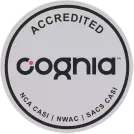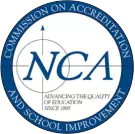Online STEM learning refers to an interdisciplinary approach to the teaching of 4 disciplines in a virtual environment:
Abbreviation STEM means:
S – Science
T- Technology
E- Engineering
M- Mathematics
In today’s advanced learning environment, where the world is becoming increasingly reliant on technology, having STEM skills is considered an invaluable asset. It helps us understand the elements of technology, thus making our lives easier. For those who might be thinking what the term STEM means, it simply expands to Science, Technology, Engineering, and Mathematics and involves studying these subjects with not only a theoretical but also a practical approach.
However, when it comes to STEM education, you may wonder which could be the best method to begin learning- should I choose the traditional and offline learning method or use the modern technology-based online learning platforms? While both of these methods have their set of pros and cons, we shall try to simplify your selection process based on the latest trends, facts, and data. However, let’s first understand the basics of STEM education and its significance in today’s fast-developing world.
What is STEM Education?
STEM education refers to the study of science, technology, engineering, and mathematics. Rather than teaching all of these subjects separately, the stem curriculum typically includes all of these subjects together and turns them into a cohesive learning course.
Education in STEM will lead to enhancing numerous skills and will give you a wide range of exposure as well.

The skills learned during STEM studies hold great significance in various domains such as engineering, healthcare, IT, finance, etc. So, if STEM education fascinates you and you want to pursue it, then the most convenient way to start your journey is through online courses available at the click of a button. There are a plethora of online classes and workshops on STEM offered by some of the most prestigious universities and platforms in the world, such as Stanford University, MIT, Coursera, edX, etc.
The majority of these courses and certifications are available to everyone free of cost, so you can select the best courses and enroll in them to begin your STEM upskilling. Online STEM education will enhance many skills that will open numerous doors for your career.
What Are STEM Fields?
STEM fields consist of all areas of science, technology, engineering, and mathematics. These fields are in high demand because they are very essential for the development of new technologies, products, and services.

Importance of STEM Education
In today’s world, almost everything around us can be accessed by technology, thereby increasing the importance of STEM education, which shapes the genesis of technologies. In addition, STEM courses help people understand their surroundings better and tackle the challenges faced by humanity, such as global warming, climate change, loss of biodiversity, deadly pathogens, etc.
The laws of physics, the process of coding and software development, the structures of engineering marvels, etc., all are due to STEM education and evolving technology that prepares you to succeed in solving any type of problem.
Moreover, through STEM courses, you can develop skills like critical thinking, logical reasoning, interpersonal abilities, innovative mindset, and collaboration, which will make you become better aware of your surroundings and make better decisions in your life.

According to the Open Door Report, the number of international students pursuing STEM-related fields in the U.S. ranged from 40% in life sciences, 16% in engineering, 15% in health fields, and 6% in computer science and mathematics in the years (2020-2021).

How To Plan An Effective Online Teaching Strategy For STEM Subjects?
If you are looking to plan an effective online teaching strategy for STEM subjects, then you can simply follow the steps given below:

Tips For STEM Students
- Do as much practical stuff as you can because it will help you a lot to grasp concepts instead of reading theory.
- Seek out experienced people in the field. They will share their perspectives, which will help you gain exposure.
- Utilizing online content can help you discover a lot of resources.
- Seek opportunities in the real world to see how much importance STEM holds.
- Always embracing collaboration will be helpful for you because it will help you come out of your comfort zone.
Suppose you want to kickstart your STEM journey online. In that case, you have come to the perfect place because we at International Schooling are providing you with various comprehensive STEM courses, which will help you to gain a lot of skills to thrive in the rapid 21st century.
We follow the American curriculum, and our teachers are highly qualified teachers to make sure that they go through a 6-month training period with Cognia, a world-renowned accreditation body. Apart from that, our engaging teaching activities, such as quizzes, assessments, and online practicals, make it more interesting for the students to grasp the concepts.
We also provide students with the option of personalized learning so that they can choose what they specifically want to pursue according to their preferences, and we will offer them everything they need to reach their full potential. So join us at International Schooling and embark on your STEM journey today.
Frequently Asked Questions
Q-1 What does STEM mean in education?
Ans. Stem in education stands for these four disciples, science, technology, engineering, and mathematics.
Q-2 Is STEM education good?
Ans. In today’s fast-paced 21st century, STEM learning holds significance. Anyone familiar with STEM will develop numerous skills, such as critical thinking, analytical skills, technical skills, etc.
Q-3 How many types of STEM schools are there?
Ans. Stem elementary schools Example:-Stem middle schools – STEM high schools
Q-4 Can STEM and education be balanced?
Ans. If you are interested in exploring STEM apart from your studies, then you can enroll in an online STEM course at International Schooling and start your STEM journey.
Suggested Read
- The Positive impact of technology on education
- Homeschooling in Malaysia vs Regular School
- How to Build the Necessary Courage to Be a Homeschooling Mom
- Helicopter Parenting: How Does It Impact Kids?
- How To Be Emotionally Supportive For Your Kids
- 5 Strategies For Building A Growth Mindset In Your Child
- Positive Thinking Strategies For Teenagers
- Promoting Self-Regulation In Teens And Kids
- Common School Problems That Your Child Could Be Facing
- Signs Of Toxic Parenting And Ways To Overcome It













